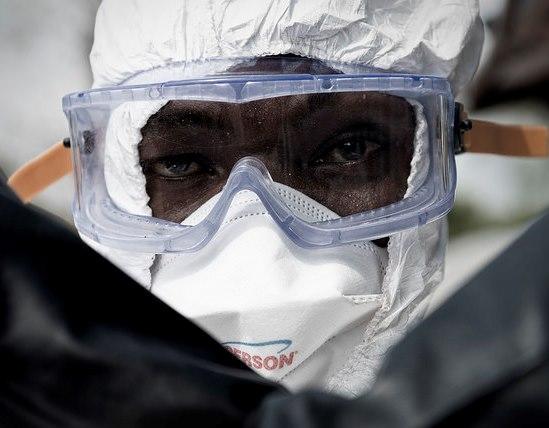The largest genome sample ever analyzed for a human epidemic reveals that the West Africa epidemic unfolded with small, overlapping outbreaks as the virus spread over short distances and that urban settings amplified the spread.
Meanwhile, another study harnessed different advanced scientific tools in the blood of a single sick patient to detail gene-level response during infection.
Factors fueling outbreak spread
In a massive international collaboration, 93 scientists from 53 institutions in 16 countries contributed to the analysis of 1,610 Ebola virus genomes from the outbreak, composing 5% of all known cases. The team published its findings on Apr 12 in Nature.
Alongside the genome analysis, the researchers looked at 25 factors that could have contributed to the spread and duration of West Africa's outbreak.
Surprisingly few infected travelers sparked new outbreaks, and the ones that did mainly spread the disease short distances, sparing other countries in the region—Guinea-Bissau, Senegal, Mali, Cote d'Ivoire, and northern Guinea—from severe impact.
Gytis Dudas, PhD, with the Fred Hutchinson Cancer Research Center in Seattle, said in a press release from the institution, "We calculated that 3.6% of cases traveled, basically meaning that if you were able to focus on those mobile cases and reduce their mobility, you might have had a disproportionate effect on the epidemic."
Border closures appeared to have some impact on virus spread, but by the time the three hardest-hit countries closed their borders, travelers had already seeded outbreaks in each country. Dudas said in the later stages of the outbreak, a particularly mobile chain of infected people moved between Sierra Leone and Guinea.
Variables that didn't seem to have significant impacts on speeding or slowing the outbreak, in contrast, included shared languages, economic output, and climate.
The researchers said the information will help predict the future of Ebola outbreaks and help guide the response. They added that real-time sequencing and rapid data sharing doesn't replace boots-on-the-ground case finding and contact tracing, but in setting such as West Africa where resources are limited, such measures can help speed the response by telling responders where to place contact tracers, treatment beds, quarantine, and other infection control measures.
Shifts in genetic response to infection
An unprecedented genetic analysis of blood samples taken daily after an Ebola patient was hospitalized revealed changes in antiviral and immune response at key points in disease progression, researchers reported Apr 12 in Science Translational Medicine.
The patient was admitted to the National Institutes of Health (NIH) Clinical Center isolation unit on day 7 of infection for a 26-day hospitalization.
He or she received supportive care, but no experimental treatments. The researchers' study goal was to explore how gene expression changes, including those linked to blood clotting problems and organ dysfunction, correlated with the patient's clinical condition.
A marked decline in antiviral responses correlated with virus clearance from white blood cells, and host responses shifted rapidly from gene activation in cell damage and inflammation toward those that promote cellular and organ repair. The shift came before the first signs of clinical improvement.
The investigators said that although the findings involve only a single patient, they might offer a clinical marker to tailor treatment or help guide the development of new treatments.
See also:
Apr 12 Nature study
Apr 12 Fred Hutchinson Cancer Research Center press release
Apr 12 Sci Transl Med case report
Apr 12 NIH press release

















